Without a doubt, this soup could be made with leftover turkey – in which case you wouldn’t need to use the slow cooker. But the flavors are lovely. Simple to make. Hearty for a cold night.
Making this soup was a milestone for me in more ways than one. If you’re not a regular reader of my blog, you won’t know that I’ve been suffering from plantar fasciitis in my left foot, and the most painful thing I do is stand still. So standing at my kitchen counter is painful.
When I do stand there, usually for just a very short time, I put more weight on the other foot, which then makes my right hip talk to me. I also try putting more of my weight on the ball of my foot, which doesn’t hurt. But that isn’t exactly comfortable for any length of time, either. Anyway, I’ve purchased another pair of the shoes that are so much better (Brooks Glycerin 12’s) and now I’ve added in two more things: Aetrex arch supports (which have a cloud-like feeling to me) and Feetures cushioned socks. Those have made a huge – and I mean huge – difference in my walking ability. Even some of the standing-still ability as well. Of course, if I’d lose 50 pounds, my foot might not hurt so much.
I’m tired of eating out. Not that I’ve done that every day – I don’t. I’ve dug things out of the freezer lots of nights. I had more of that fabulous Moroccan Harira Chicken Soup, that I can’t get enough of, some lentil soup I made many months ago, before my injury to my foot, and I’ve defrosted some pork chops and have managed to stand long enough to cook those in a skillet. I’ll make some fresh vegetables – love Brussels sprouts with dried cranberries and a tiny bit of maple syrup drizzled in at the end. Or zucchini and onion with thyme. Nothing very exciting for veggies, but they’re something I can do without too much standing. I visit my local Mexican place once a week. And I buy any number of things at Trader Joe’s. I’ve poached salmon in my Lekue case on a number of occasions because it’s done in the microwave. And I stick a few veggies in there too, so it’s a meal in one. I discovered an ancient bag of soup in my frozen Soup Library that was made in 2009 – a Mexican Black Bean Sausage Chili. Oh my goodness was it delicious. I ate it 3 nights in a row. Who says frozen food doesn’t taste good after a year. I thought it was great, and it was 5 years old! I also make myself an omelet for dinner once in awhile. If I have a big lunch out, then I eat salad (often one from Trader Joe’s ready-made ones, my current favorite being Chicken Citrus Salad) or soup, or even cold cereal on occasion.
All that story leading up to the fact that the other night I WANTED to cook. That’s the other milestone. Since Dave died (8 months ago now), my interest in cooking has been only because I needed to feed myself. The joy of cooking had completely vanished. I won’t say that I didn’t enjoy eating the food I ate, I just didn’t want to cook it and if I cooked, it wasn’t fun at all. This particular morning, though, I thought about what I’d like to have and felt that I’d be able to do something in my small crockpot. I went to one of my crockpot cookbooks and found this one. I had all the ingredients, so that made the decision very easy. What appealed to me was beef stew, but I didn’t have any beef chunks in the freezer, so that idea went down the drain. I did have chicken, though. I almost always have chicken breasts and thighs on hand.
So with this recipe I’m celebrating the fact that I wanted to cook and that I was able to stand up at the kitchen counter long enough to do the food prep. Hooray! I had 2 pounds of boneless, skinless chicken thighs. I cut them up into large-ish bite-sizes. I sautéed the onions, added the garlic in at the end, sort of browned the chicken, then added in everything else and let it slow cook for about 2 1/2 hours. The recipe said 6-8 on low, 3-4 on high. Well, that didn’t work for me – this soup was completely done in about 2+ hours on low. I went online and read another website with this recipe (which came from Andrew Schloss’s Art of the Slow Cooker: 80 Exciting New Recipes). Others commented that the chicken was dry after that many hours, so I’d definitely not leave this to cook all day. Chicken thighs do have a lot more moisture, but chicken breasts would probably be done in an hour. You could slow it down by using chilled chicken broth, chilled canned tomatoes, etc.
Based on info I found in the comments at that website, I added a large can of tomatoes and more chicken broth. For myself, and because I’d added more liquid volume to it, I also amped up the spices just a little – rounded the teaspoons for all of them. I added regular grocery-store chili powder, which doesn’t have much heat – use your own judgment about that for you and your family. If I served this again, I might also add just a little bit of frozen corn (just to give it some color). Corn isn’t necessary, but it would be a nice addition. I’ve added it into the recipe below even though I didn’t use it. The chocolate – well, it wasn’t noticeable, to me. I think it would need more than an ounce. Someone else used chocolate chips, chopped up some.
What’s GOOD: how easy and quick it was to put together. You do need to sauté the onions (which gives them more flavor). My small crockpot allows me to sauté in the pot. I took out the onions then added in the chicken, then added all the ingredients (except the cilantro and chocolate added at the last). It was really delish. For a quick meal you could do this on the stove and it would be ready in about 30 minutes, I suppose. I decided to use the slow cooker because I was going to be gone for awhile in the afternoon (went to a movie). When I got home the soup was done to perfection.
What’s NOT: this isn’t really complex chili – although by adding your own type of chili powder (ancho? New Mexico?) it might change the flavors some. I was completely satisfied, though, for a quick dinner. I now have frozen half of it and will eat the rest for another 2 meals. If you’re feeing 6 hungry people, it might not be enough. Add another can of beans perhaps?
Files: MasterCook 5+ and MasterCook 14 (click on link to open recipe in MC)
* Exported from MasterCook *
Chocolate Chicken Chili Soup
Recipe By: Adapted some from Art of the Slow Cooker by Andrew Schloss
Serving Size: 6
2 tablespoons vegetable oil
2 pounds boneless skinless chicken thighs — cut in 1/2″ cubes
1 large onion — finely chopped
4 cloves garlic — minced (yes, really 4)
1 1/2 teaspoons ground cumin — preferably ground from whole seeds toasted in a dry skillet
1 1/2 teaspoons dried oregano
1 1/2 teaspoons dried thyme
2 teaspoons chili powder — your choice of type, mild to hot
1/2 teaspoon ground cinnamon
1 1/2 teaspoons kosher salt
1/2 teaspoon coarsely ground pepper
3 teaspoons flour — (optional)
2 cups low-sodium chicken broth
28 ounces diced tomatoes — preferably fire-roasted, with their juice
15 ounces canned white beans — drained and rinsed
1 cup frozen corn — (my suggestion)
2 ounces bittersweet chocolate — broken into pieces or chopped finely
2 tablespoons fresh cilantro — with more for garnish
Note: I did all of the cooking of this in my slow cooker as it has a saute setting. Then I added in all the ingredients (except cilantro and chocolate) and brought it up to temp (still on the saute setting), then I reduced the heat to slow-low.
1. Heat the oil in a large deep skillet and saute the chicken until it looses its raw color, about 3 minutes. Transfer to a 5-6 quart slow cooker.
2. Add the onion to the oil remaining in the skillet and saute until tender, about 2 minutes.
3. Add the garlic, cumin, oregano, thyme, chili powder, cinnamon, salt, pepper, and flour and stir until the onion is evenly coated. Cook for 1 minute, stirring constantly.
4. Add the broth and tomatoes and stir until the liquid boils and thickens. Transfer to the slow cooker.
5. Add the beans (and corn, if adding), cover and cook for 2-3 hours on high or 3-4 hours on low. My soup was done in about 2 hours.
6. Reduce the cooker to warm. Add the chocolate and cilantro and stir until the chocolate melts, about 2 minutes. Serve immediately with additional cilantro on top or hold on warm for up to 2 hours. Serve with cornbread, biscuits or flour tortillas.
Per Serving: 430 Calories; 21g Fat (40.1% calories from fat); 37g Protein; 35g Carbohydrate; 8g Dietary Fiber; 120mg Cholesterol; 725mg Sodium.





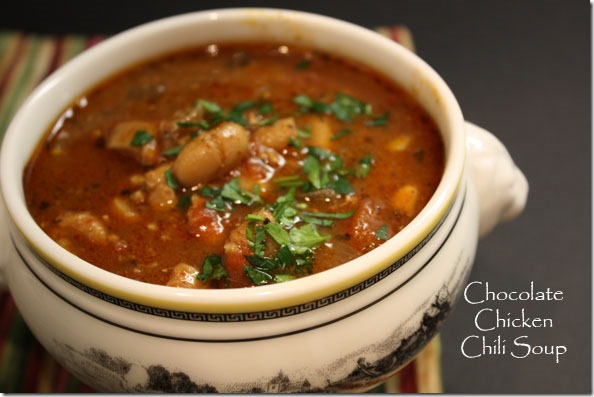

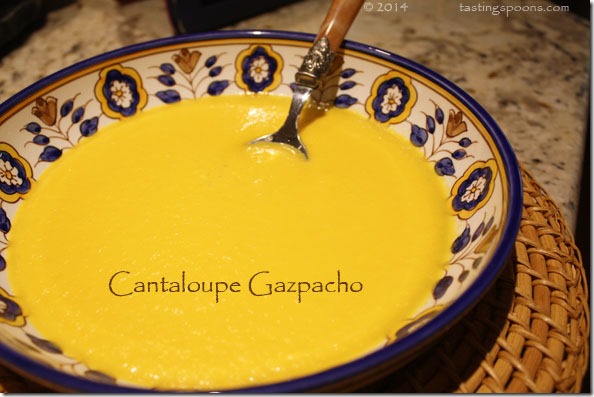
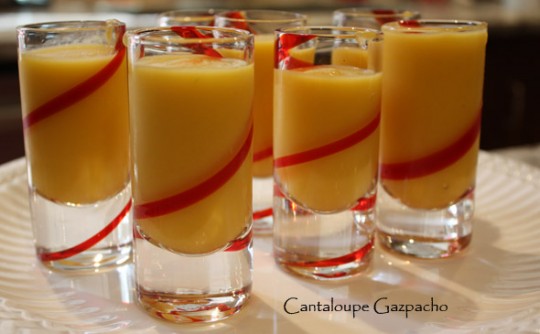
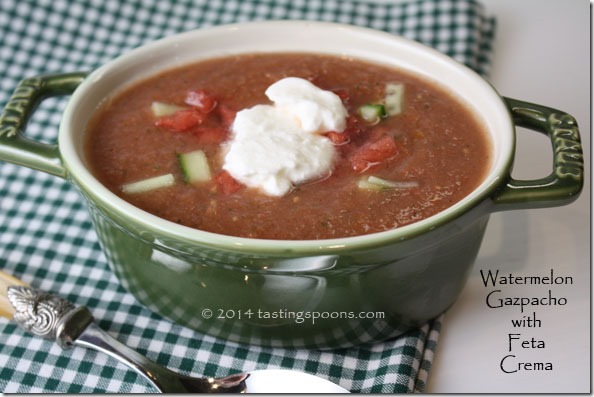
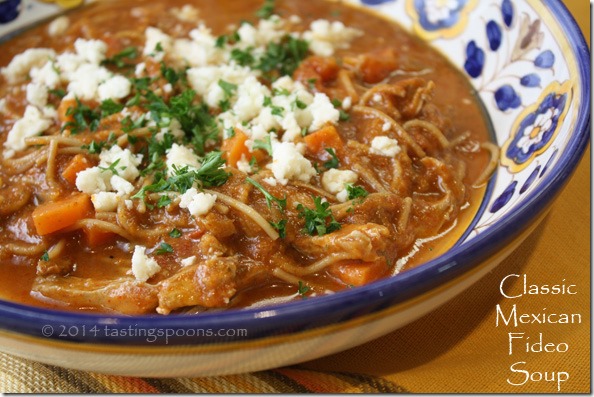
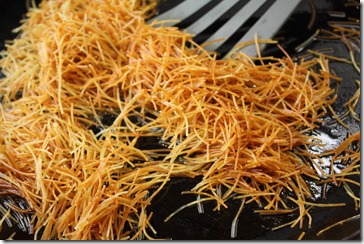
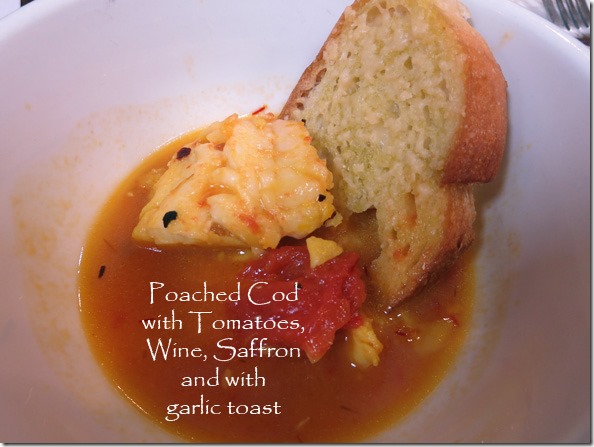
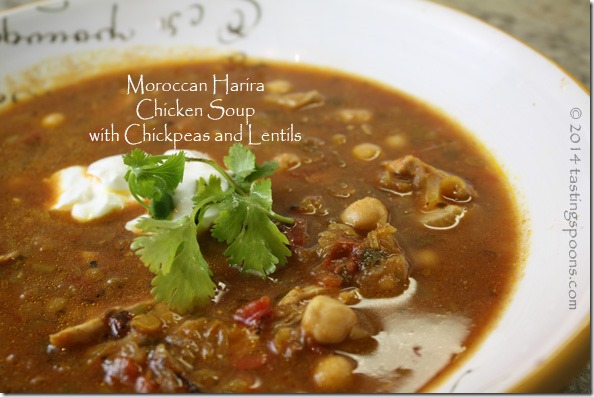
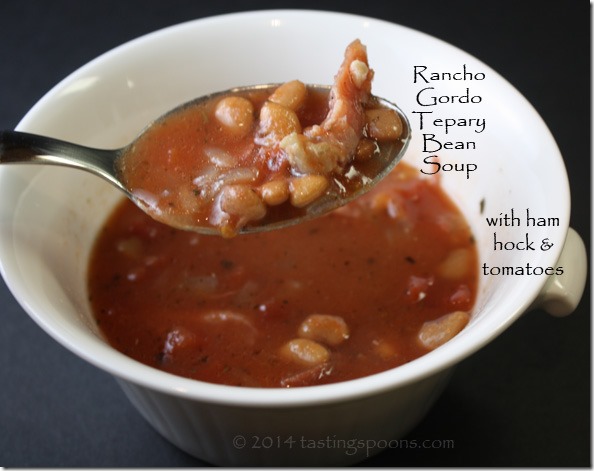
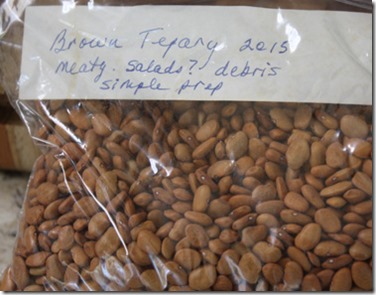
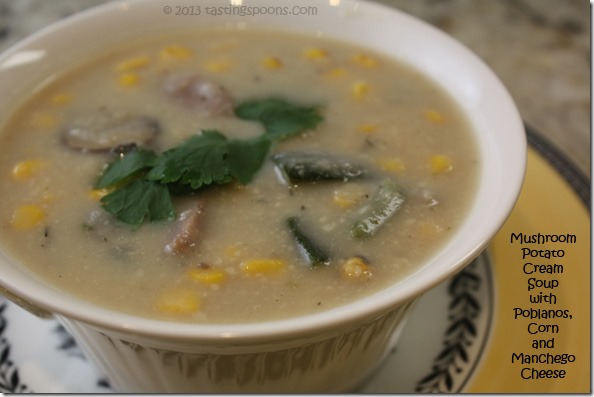
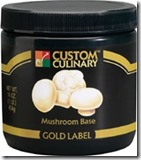
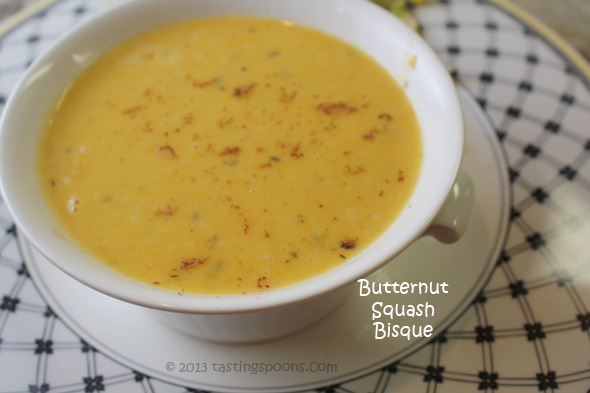
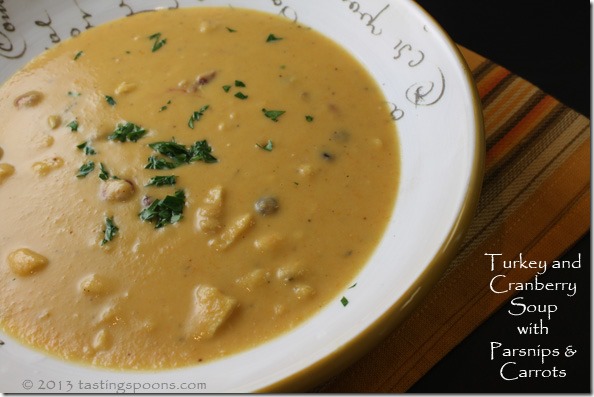
Leave a Comment!